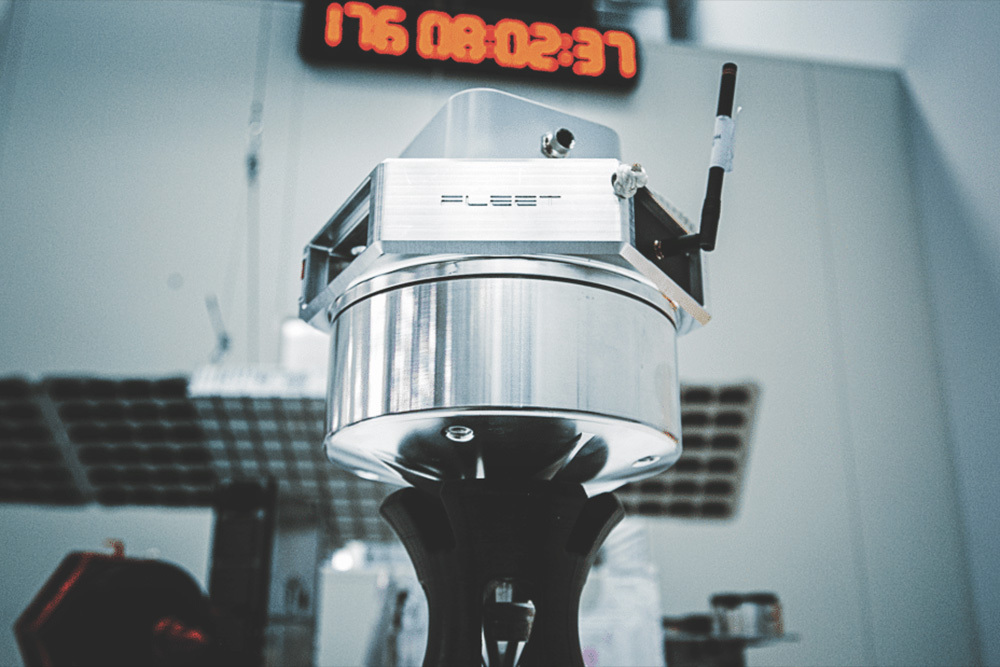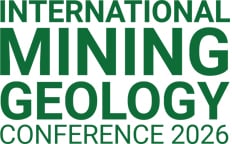Australian Mining interviews Flavia Tata Nardini

Fleet Space’s ExoSphere uses technology to rapidly provide 3D subsurface insights for mining geologists. Image: Fleet Space Technologies
By Alexandra Eastwood
Mining has traditionally remained on the ground, but one company is looking to take the industry to new heights.
Even as a child, Flavia Tata Nardini knew she would one day work in the field of rocket science.
“Every time I would look up at the stars, I had a deep desire to learn more about space and the technologies that enable humanity to explore it,” she told Australian Mining.
Now, as chief executive officer and co-founder of Fleet Space Technologies – a space exploration company which is said to be “revolutionising” the search for critical minerals – Nardini gets to build those very technologies of which she was in awe as a child.
“Fleet Space’s mission from the beginning was to build technologies that enable humanity to explore and connect Earth, the moon, and Mars,” Nardini said.
“After launching Australia’s first LEO (low earth orbit) satellite constellation, I started looking into ways advanced space technologies can address the shortage of critical minerals needed to achieve net-zero.”
This idea will be a major theme of Nardini’s keynote speech at AusIMM’s International Mining Geology Conference.
Held at the Perth Exhibition Centre from May 7–8, the conference provides an opportunity for industry experts to come together and explore advancements in mining geology.
“To meet the rapidly growing demand for critical minerals, we need to leverage new technologies and techniques to accelerate the discovery of new deposits around the world,” Nardini said.
“We need to make mineral exploration data-driven, agile and fast so field teams can make operational and re-targeting decisions more rapidly.
“Without this paradigm shift, net-zero and our planet’s transition to clean energy will be impossible.”
As discoveries become more difficult to find near the surface and the demand for critical minerals intensifies, Nardini is building up Fleet Space to be a pioneer for the entire industry.
“Historically, mineral exploration has involved large amounts of exploratory drilling, which can be very expensive and environmentally impactful,” she said.
“But there is a better way: using space-enabled technology to rapidly provide 3D sub-surface insights that help teams do more with fewer drill holes, and ultimately accelerate their path to discovery.”
Nardini said this is where Fleet Space’s ExoSphere can play a major role.
“ExoSphere, our space-enabled mineral exploration technology, has been used to conduct over 250 surveys on a variety of commodity types across five continents with over 35 global exploration customers,” she said.
“ExoSphere’s ability to deliver 3D sub-surface mapping of survey areas in days, with near-zero environmental impact, is already proving to be a powerful tool for exploration customers worldwide.
“This changes the game for exploration teams, allowing them to quickly enhance their understanding of 3D geological structures at a project and action that insight in their exploration programs in days instead of weeks or months.”
This year’s AusIMM International Mining Geology Conference will feature an industry challenge on Monday May 6: visualising the future of mining.
The challenge, sponsored by Northern Star and supported by AROSE, is a collaborative competition among teams of geoscientists and other professionals with experienced facilitation and external support. The goal will be to envisage a future workplace where current processes and activities have been turned on their head, leaving only the fundamentals of the profession remaining essential to operational success.
It’s this kind of collaborative and out-of-the-box thinking that has seen Fleet Space become so successful in its field.
“ExoSphere’s widespread adoption has been a major driver of Fleet Space’s exponential growth over the past year,” Nardini said.
“We are also planning to send a variant of our ExoSphere technology to the moon in 2026 as part of a NASA Commercial Lunar Payload Services (CLPS) initiative to search for ice and unlock new insights about the lunar regolith.”
And although Fleet Space’s business is in the sky, the benefits of its technology can be felt firmly on the ground.
“Looking at the mining industry, we found that it can take years or months to acquire and process data about a survey area before it can be leveraged as part of an exploration campaign,” Nardini said.
“ExoSphere brings together the latest advances in space technology, edge processing, and satellite connectivity to deliver 3D subsurface models of a survey area in days – demonstrating a more scalable and sustainable way to accelerate mineral discovery globally.”
This feature appeared in the April 2024 issue of Australian Mining.

